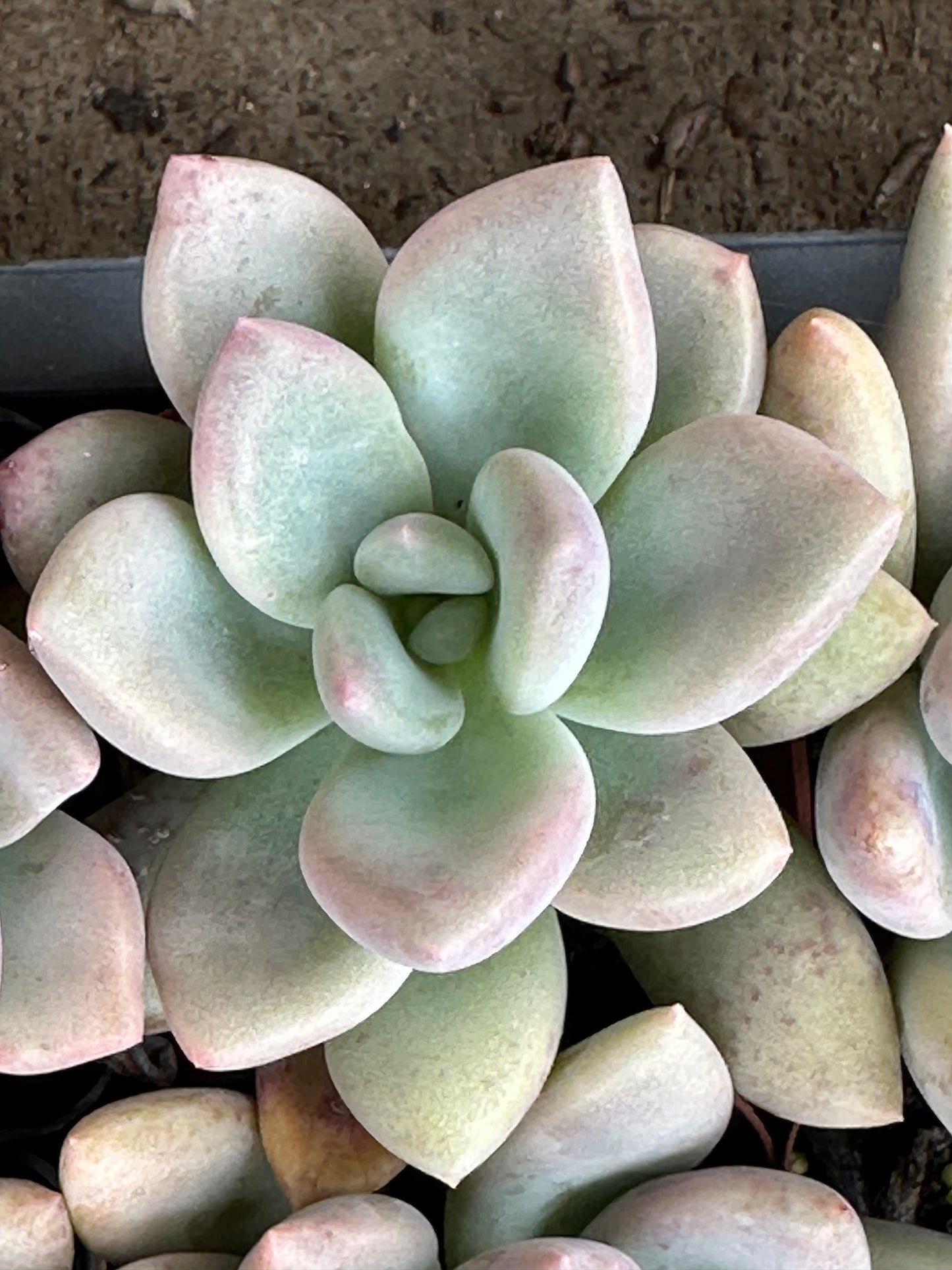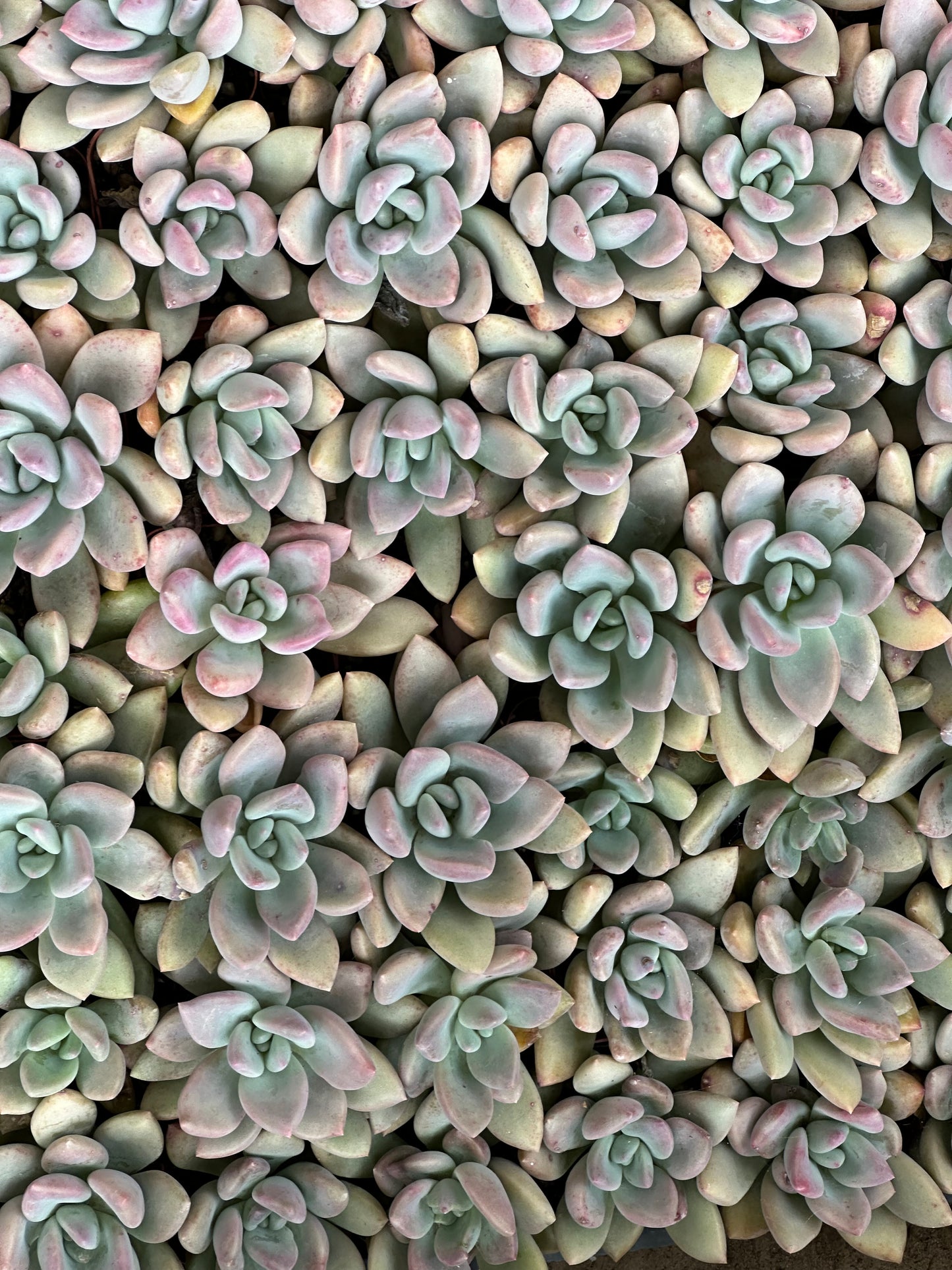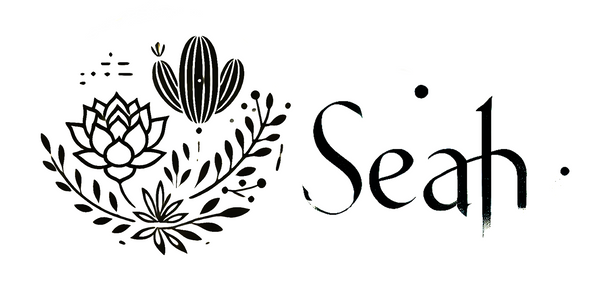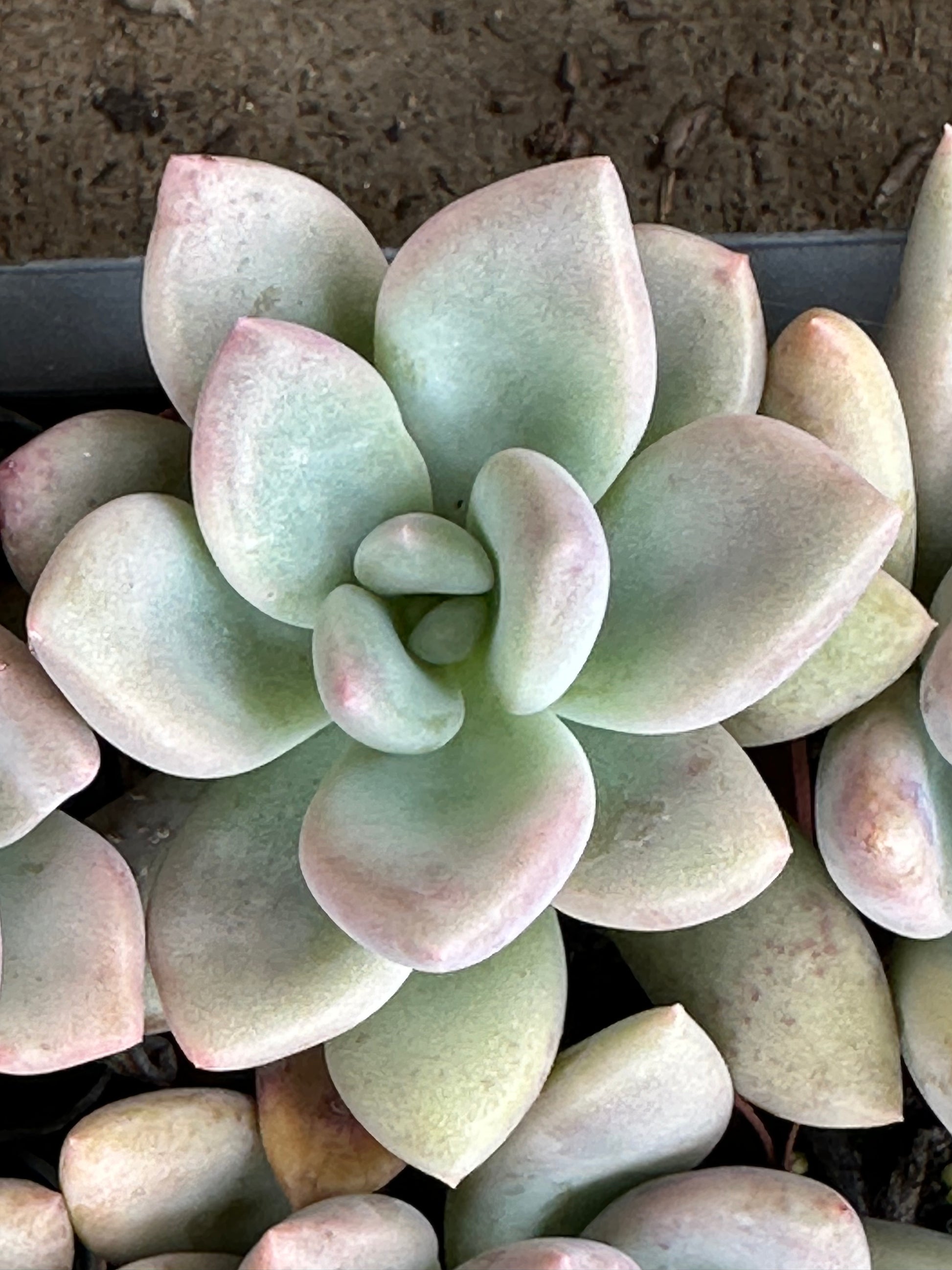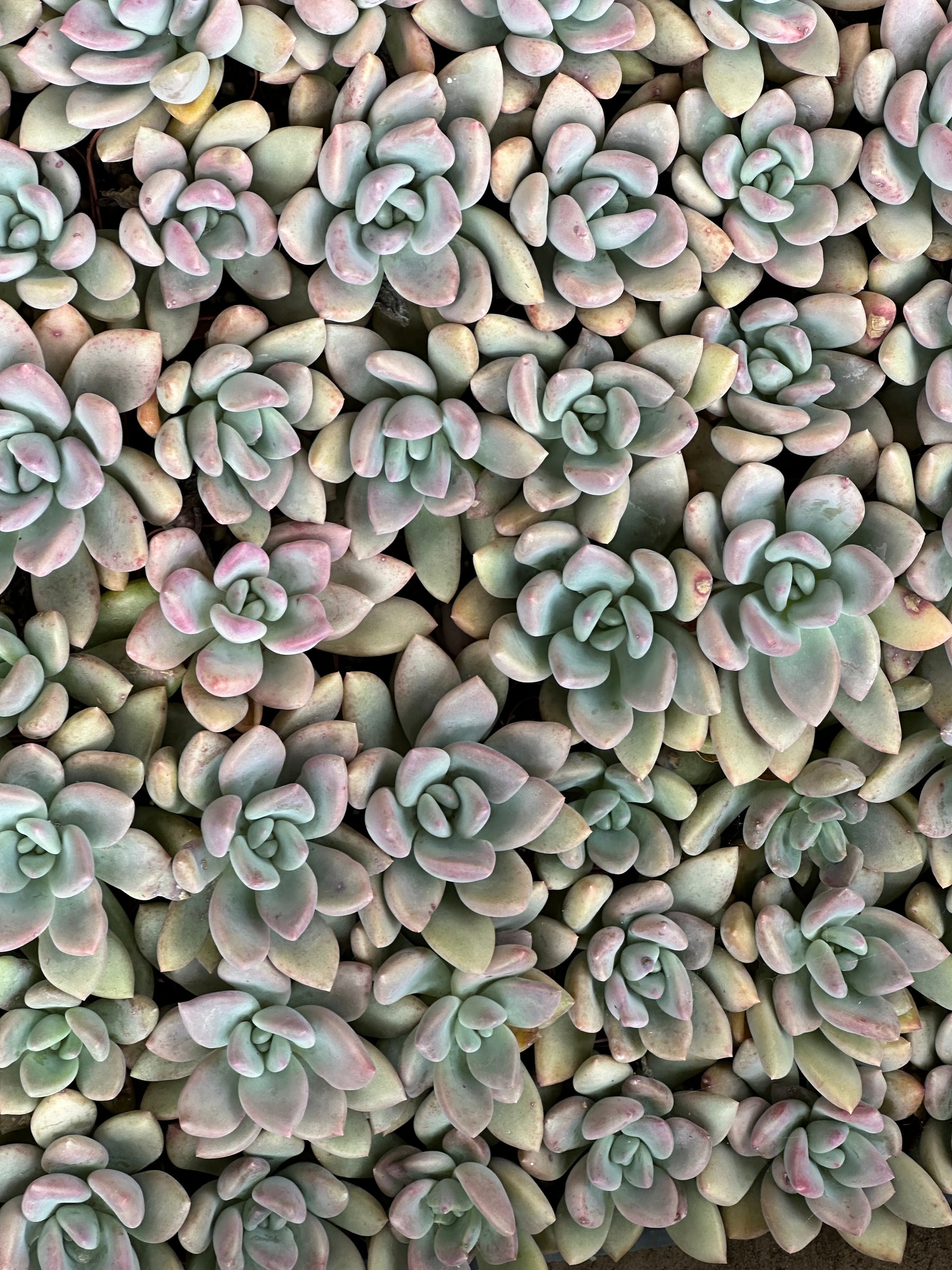Pachyphytum - Blue Haze
Pachyphytum - Blue Haze
In stock
Couldn't load pickup availability
📝 Description
Pachyphytum 'Blue Haze', a member of the succulent family, is known for its distinctive and appealing appearance. Here's a detailed overview of its morphological characteristics, growth habits, maintenance points, and reproduction methods:
Morphological Characteristics
- Leaves: Pachyphytum 'Blue Haze' features thick, fleshy leaves that are a striking blue-gray color, often with a powdery or waxy coating that gives them a "hazy" appearance. The leaves are oval to spindle-shaped and can have a slight pink or purple tint at the tips or edges when exposed to bright sunlight.
- Size: This plant typically forms compact rosettes that can grow up to 10 cm (about 4 inches) in diameter. The stout leaves and slow growth habit make it a striking addition to succulent collections.
- Flowers: It blooms with small bell-shaped flowers, usually in shades of pink or orange, on tall stems above the foliage. The flowering season is late winter to early spring.
Growth Habits
- Light: Prefers bright, indirect sunlight or partial shade. Direct sunlight can enhance the leaf colors but may also cause sunburn if too intense.
- Temperature: It thrives in warmer temperatures and is not frost-tolerant. Ideal growing temperatures are between 15°C to 25°C (59°F to 77°F).
- Water: Like many succulents, 'Blue Haze' requires minimal water. Water thoroughly when the soil is completely dry and then allow it to dry out again before the next watering. Reduce watering frequency during the winter months.
Maintenance Points
- Soil: Well-draining soil is crucial. A cactus or succulent potting mix is ideal.
- Pot: Use a pot with drainage holes to prevent water accumulation and root rot.
- Fertilizer: A light application of a diluted, balanced fertilizer can be applied during the growing season (spring and summer), but is not necessary for healthy growth.
- Pruning: Generally requires little to no pruning. Dead or damaged leaves can be removed to maintain appearance.
Reproduction Method
- Leaf Cuttings: The most common method of propagation for 'Blue Haze' is through leaf cuttings. Gently twist and pull a leaf from the stem, ensuring it is a clean break. Allow the leaf to callous over for a few days, then place it on top of well-draining soil. Roots and a new plantlet will eventually form.
- Offsets: 'Blue Haze' may produce offsets or "pups" that can be separated and replanted. This method is straightforward and effective for expanding your collection.
- Seeds: While it can be grown from seeds, this method is less common due to the slower growth rate and longer time to maturity.
Pachyphytum 'Blue Haze' is celebrated for its unique coloration and form, making it a popular choice among succulent enthusiasts. Its care requirements are minimal, making it suitable for beginners looking to add an eye-catching element to their indoor or outdoor succulent gardens.
🌿 Care Tips
Plant Care
Light
Water
Soil
Temperature
Hardiness
Fertilizer
Propagation: Leaf/offset cuttings
Common issues: Etiolation, mealybugs, rot
🌟 Note: It’s normal for succulents to appear slightly shriveled after shipping. They usually recover within a few days in a suitable environment.
📦 Shipping Info
Seah Shipping Policy
Effective Date: November 2025
This Shipping Policy applies to orders delivered within the continental United States (the lower 48 states). By purchasing from Seah, you agree to the terms below.
1) Shipping Cost & Free Shipping
- Automatic rate calculation: Shipping is calculated at checkout based on weight, destination ZIP and carrier rates.
- Free Standard Shipping: Orders $59+ (pre-tax, after discounts) ship free to the lower 48 states.
- Alaska, Hawaii, Puerto Rico & other territories: Not eligible for free shipping or standard flat offers at this time.
- Taxes/Duties: Applicable sales tax and any fees are shown at checkout.
2) Processing Schedule
- Business days only: We process and ship Monday–Friday. No shipping on weekends or U.S. federal holidays.
- Handling time: 1–3 business days after payment confirmation.
- Cut-off time: Orders placed before 3:00 PM (PST) are prioritized for same-day processing; others roll to the next business day.
- Changes/Cancellations: Email support@seah.co within 12 hours of purchase; after that, the order may already be in processing.
3) Transit Times
| Method | Estimated Transit | Total ETA (Handling + Transit) |
|---|---|---|
| Standard | 5–8 business days | 6–11 business days |
| Express | 3–4 business days | 4–7 business days |
ETAs are estimates. Weather, holidays, carrier delays or high-volume periods may extend delivery times.
4) Seasonal Temperature & Plant Safety
- Winter (Nov–Mar): We strongly recommend adding a heat pack at checkout to protect plants from freezing. Orders shipped without a heat pack during cold conditions are not covered for cold damage.
- Summer heat: During extreme heat waves, we may hold shipments until temperatures normalize. We’ll notify you if there’s a hold.
- Packaging: Plants are carefully packed (bare-root or potted by type/size) to minimize transit stress.
5) Carriers & Tracking
- We ship via USPS / UPS / FedEx, selected automatically for best service to your address.
- When your order ships, you’ll receive a tracking email. Tracking typically activates within 24 hours.
- If you haven’t received tracking within 3 business days, contact us at support@seah.co or +1 (626)-999-1314.
6) Address Changes & Delivery Issues
- Before shipment: Request address changes within 12 hours of ordering.
- After shipment: We can’t modify the address once dispatched. Please contact the carrier for redirection options.
- PO Boxes: Supported for USPS only; UPS/FedEx require a street address.
- Seah isn’t responsible for delays or loss due to incorrect addresses provided at checkout.
7) Service Area
We currently ship to the continental U.S. (lower 48 states). Orders to AK/HI/PR and other territories are not eligible for free shipping and may be restricted.
8) Support
- Hours: Mon–Fri, 9:00 AM – 5:00 PM (PST)
- Phone: +1 (626)-999-1314
- Email: support@seah.co
- Address: 7870 Margaux Pl, Rancho Cucamonga, CA 91739, United States
Thank you for supporting our California nursery—each plant is hand-selected and packed with care. 🌱
